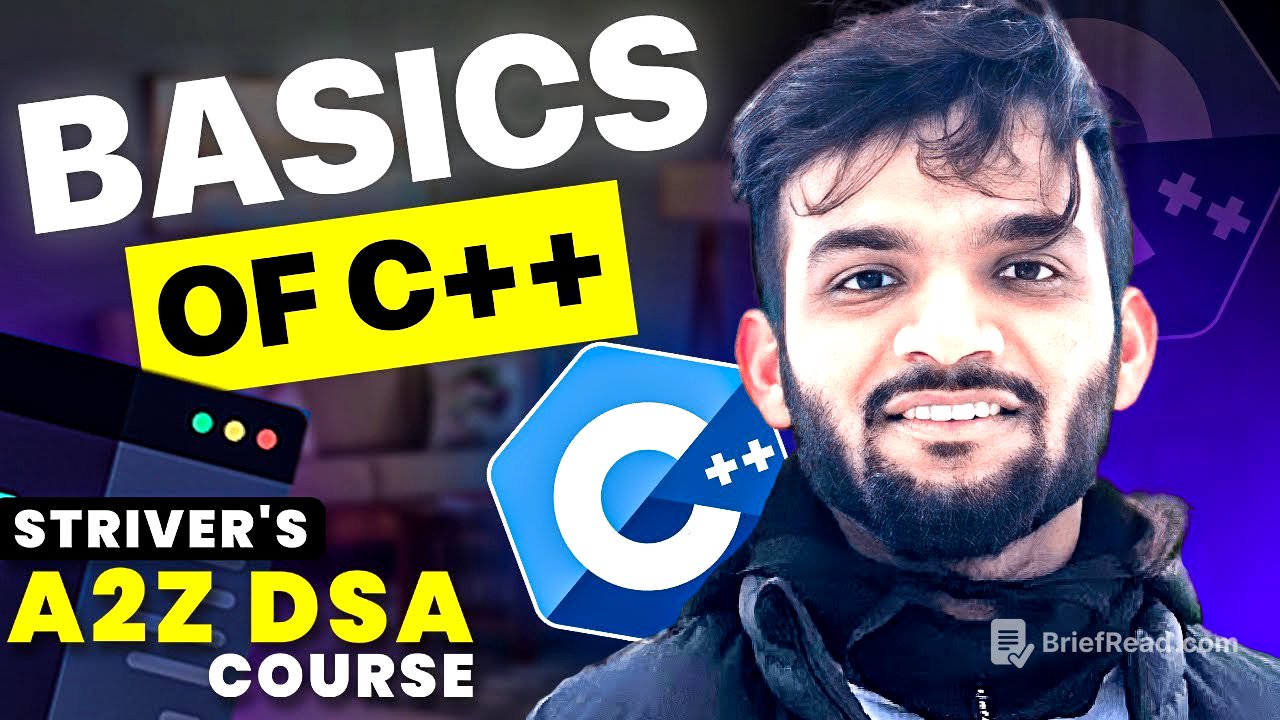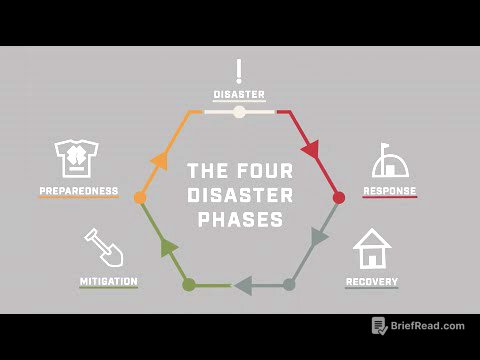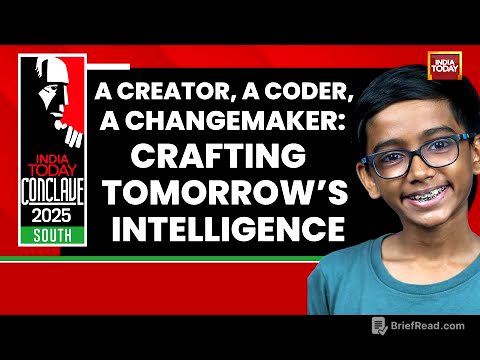TLDR;
This video serves as an introductory guide to C++ programming, essential for data structures and algorithms (DSA). It covers the basic syntax, data types, control structures, and functions necessary for beginners. The video emphasizes practical application and encourages viewers to follow along for a hands-on learning experience.
- Basic C++ Syntax
- Data Types
- Control Structures
- Functions
- Arrays and Strings
Introduction to DSA Course and C++ Basics [0:03]
The video introduces Take U Forward as a comprehensive interview preparation website, highlighting the Strivers SD sheet for those with 3-6 months until interviews, and the Strivers A to Z DSA course/sheet for beginners. The A to Z DSA course includes 455 curated steps with videos for complex topics. The video will cover step 1.1, focusing on essential C++, Java, or Python knowledge for DSA. The presenter encourages viewers to check out success stories on LinkedIn and Instagram.
Setting Up C++ Environment and Basic Code Structure [4:11]
The presenter uses VS Code for coding, with input on one side and output displayed on the other. Viewers are encouraged to watch the video till the end, even if familiar with C++, as it will cover interesting points. It's advised not to dig too deep initially but to grasp the basics and gradually learn in depth. The basic C++ code skeleton includes #include <iostream>, int main(), and return 0;. The #include statement is used to include libraries, such as <iostream> for input/output, <math.h> for mathematical functions, and <string> for strings.
Printing Output and Taking Input in C++ [6:56]
To print output, std::cout is used, which is part of the std namespace. To avoid writing std:: repeatedly, using namespace std; can be used. The video demonstrates printing strings and using \n or std::endl for new lines. For input, std::cin is used to take input into variables. The presenter explains how to take multiple inputs and store them in different variables.
Using the Bits Standard C++ Header and Data Types [11:11]
To include all standard C++ libraries, #include <bits/stdc++.h> can be used, though it may increase compilation time slightly. The video transitions to data types, explaining how to store numbers using int, long, and long long, each with different ranges. Comments in C++ are written using double backslashes //.
Floating Point Numbers, Strings, and Characters [14:42]
The video covers storing decimal numbers using float and double, and strings using the string data type. It explains the difference between using cin and getline for string input. cin only picks up the first word before a space, while getline picks up the entire line. Characters are stored using the char data type, enclosed in single quotes. The presenter advises using appropriate data types to save memory space.
If-Else Statements: Basic Conditional Logic [20:57]
The video introduces if-else statements with a program that checks if a person is an adult based on their age. It explains the syntax of if and else blocks and demonstrates how to use comparison operators. The presenter also shows how to use else if for multiple conditions and how to omit the else statement if it's not needed.
Complex Conditional Problems and Nested If-Else Statements [25:42]
The video presents a complex problem involving a school grading system, solved using multiple if-else if statements. The presenter explains how to optimize the code by trimming down unnecessary conditions. The video also covers nested if-else statements, demonstrating how to write conditional statements inside other conditional statements.
Switch Statements: An Alternative to If-Else [35:10]
The video introduces switch statements as an alternative to if-else for handling multiple cases. It explains the syntax of switch statements, including case and break statements. The break statement is crucial to prevent fall-through to the next case. The video also covers the default case, which is executed if none of the other cases match.
Arrays: Storing Multiple Data Elements [40:12]
The video introduces arrays as a way to store multiple elements of the same data type. It explains how to declare an array, access elements using indexes, and modify elements. The presenter also explains the concept of zero-based indexing.
Multi-Dimensional Arrays and Strings [45:12]
The video covers 2D arrays, explaining how to declare and access elements using row and column indexes. It also touches on strings, explaining how to access characters using indexes and how to find the length of a string using the length() or size() function.
For Loops: Repeating Code Execution [51:32]
The video introduces for loops as a way to repeat a block of code multiple times. It explains the syntax of for loops, including initialization, condition, and increment/decrement. The presenter demonstrates how to run a for loop in reverse order and how to write complex conditions.
While and Do-While Loops: Conditional Code Repetition [57:32]
The video covers while loops and do-while loops. A while loop executes a block of code as long as a condition is true. A do-while loop is similar to a while loop, but it executes the block of code at least once, even if the condition is false.
Functions: Modularizing Code and Reusability [1:01:16]
The video introduces functions as a way to modularize code, increase readability, and reuse code. It explains the syntax of functions, including the return type, function name, and parameters. The presenter covers void functions, return functions, parameterized functions, and non-parameterized functions.
Pass by Value vs. Pass by Reference [1:14:51]
The video explains the difference between pass by value and pass by reference. Pass by value means that a copy of the variable is passed to the function, so any changes made to the variable inside the function do not affect the original variable. Pass by reference means that the address of the variable is passed to the function, so any changes made to the variable inside the function do affect the original variable. Arrays are always passed by reference.
Arrays and Loops [1:20:32]
The video explains how to use loops to iterate through arrays and perform operations on each element. It emphasizes that arrays are always passed by reference, so any changes made to the array inside a function will affect the original array. The video concludes by setting the stage for the next video, which will cover time complexity.









